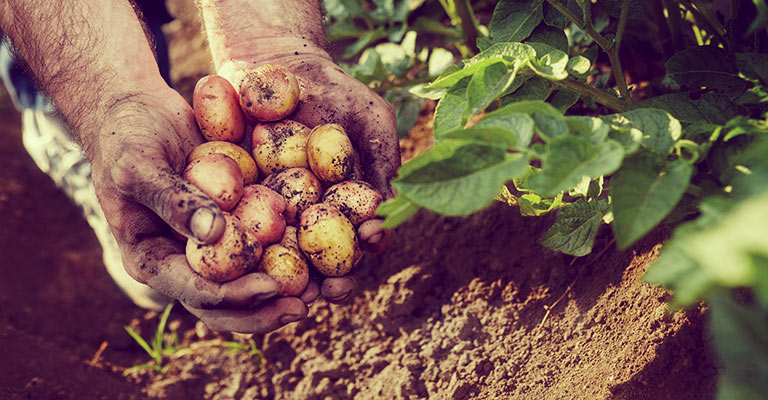
Potatoes are amazingly easy to grow, and digging homegrown spuds at the end of the season is a little like finding buried treasure. Potatoes are available in a tremendous range of sizes, shapes, flavors, colors and textures, and all are great additions to the garden.
The trickiest part of the entire process is deciding which type of potato to grow. The solution? Try a variety of potatoes and compare!
Potatoes: Which is Which?
Russets are traditional baking potatoes, easily recognized by their large size, oblong shape and relatively thick, brownish skin. The flavor is delicate and slightly earthy. Russets are starchy and their low moisture content makes perfect for baking, mashing or frying. However, they are fluffy when cooked and don’t hold their shape well, so they tend to disintegrate in casseroles, soups and stews.
Varieties: Norkotah, Silverton, Owyhee, Goldrush, Frontier, Ranger and Norgold.
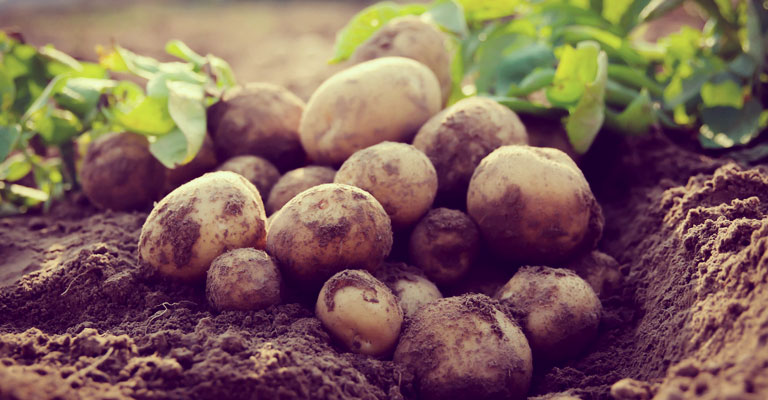
Like russets, white potatoes have a round to oblong shape, but the thin skin is smoother and lighter in color. White potatoes are moderately starchy and slightly sweet. The texture is firmer than russets, so they hold their shape well and can be cooked any way you like. Thanks to the delicate skin, white potatoes don’t need to be peeled.
Varieties: Ivory Crisp, Kennebeck, Cascade, Lamoka, Onaway, White Rose, Cleopatra, Desiree, Mont Blanc and Lady Rosetta.
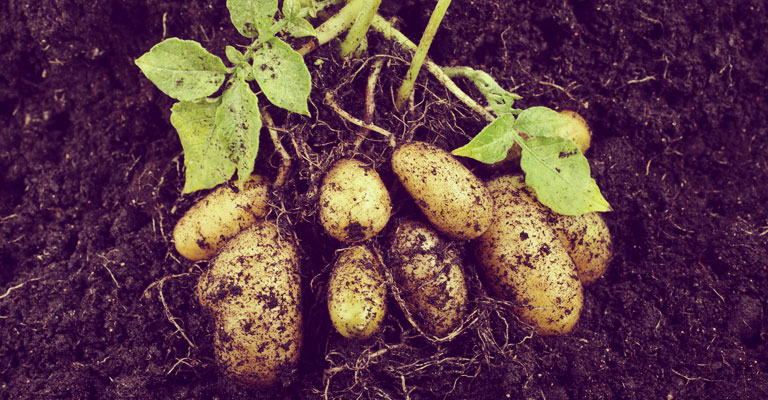
Yellow potatoes can be as small as a marble or considerably larger. Regardless of size, the golden yellow potatoes have a smooth, buttery texture and a subtle, sweet, mild flavor. Yellow potatoes are delicious baked, mashed, grilled or roasted, but they tend to disintegrate in soups and stews.
Varieties: Alegria, Monalia, Miranda, Casablance, Premiere, Rosabelle and Yukon Gold.
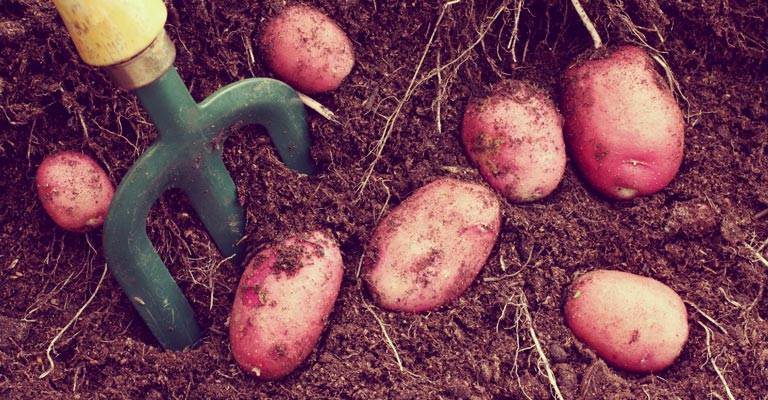
Red potatoesare small to medium potatoes, round or slightly oblong in shape with skin of rosy red. The white flesh is moist, creamy and slightly sweet. Red potatoes are versatile for boiling, roasting, mashing, steaming and baking. They hold their shape well in soups and stews.
Varieties: Viking, Norland, NorDonne, Red Pontiac, LaRouge, Red Bliss and Red Ruby.
As the name suggests, fingerling potatoes are small, narrow potatoes. These interesting little spuds are available in a rainbow of colors, including purple, orange and red, with flesh of yellow, white, reddish-orange or purple. Fingerlings, which don’t require peeling, have a firm texture and a buttery, earthy, slightly nutty flavor. They’re ideal for roasting or pan frying, and they hold up well in salads.
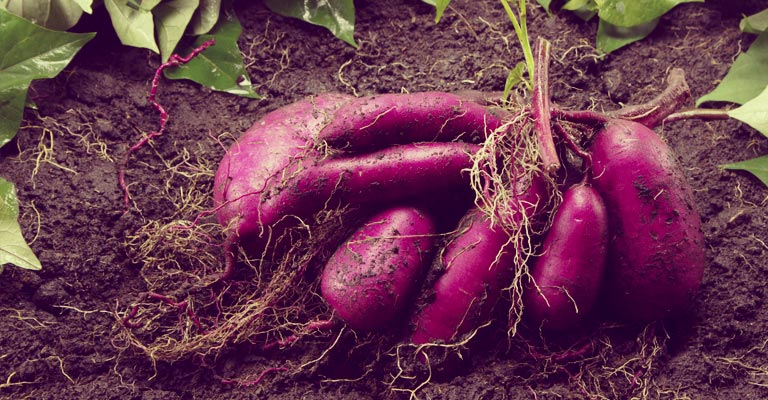
Purple and blue potatoes may range in color from lavender to rich blue or slightly reddish with flesh of white or pink. The flavor of these colorful potatoes is delicate and slightly nutty. Purple and blue potatoes have a low sugar content which makes them highly versatile. They’re good steamed, roasted, baked or grilled, and they work well in salads.
Varieties: Adirondack Blue, Purple Peruvian
Harvested before they’re fully mature, new potatoes can be any type of potato mentioned above. New potatoes are delicious but the skin is thin and tender, so don’t expect them to hold up as well as mature potatoes.
Subscribe to our newsletter to receive our gardening tips, news and more directly in your inbox! Fill in the form below. Please note that fields with an * are required.